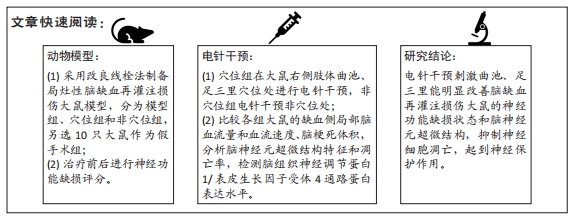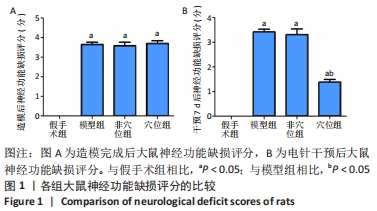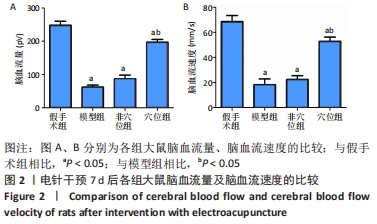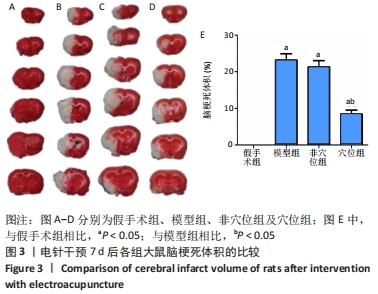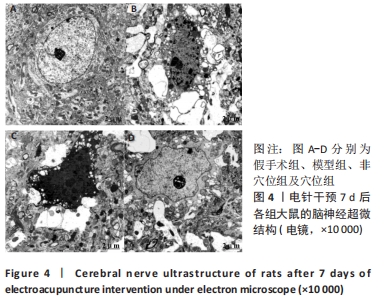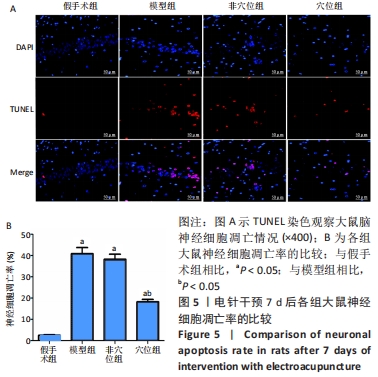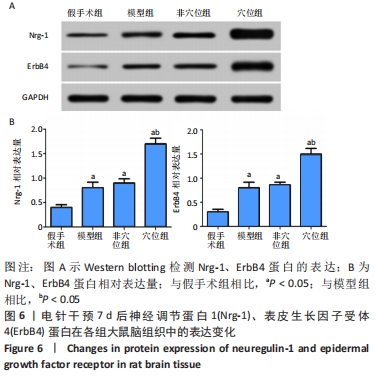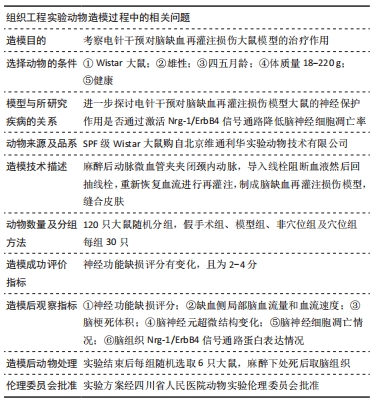[1] NIKSERESHT S, KHODAGHOLI F, AHMADIANI A. Protective effects of ex‐527 on cerebral ischemia–reperfusion injury through necroptosis signaling pathway attenuation. J Cell Physiol. 2019;234(2):1816-1826.
[2] GUO X, YUAN J, LI M, et al. Neuroprotection of Intermedin Against Cerebral Ischemia/Reperfusion Injury Through Cerebral Microcirculation Improvement and Apoptosis Inhibition. J Mol Neurosci. 2020;71(4):767-777.
[3] YOO JY, KIM HB, YOO SY, et al. Neuregulin 1/ErbB4 signaling attenuates neuronal cell damage under oxygen-glucose deprivation in primary hippocampal neurons. Anat Cell Biol. 2019;52(4):462-468.
[4] SCHULZ VC, DE MAGALHAES PSC, CARNEIRO CC, et al. Improved Outcomes after Reperfusion Therapies for Ischemic Stroke: A “Real-world” Study in a Developing Country. Curr Neurovasc Res. 2020; 17(4):361-375.
[5] LONG M, WANG Z, ZHENG D, et al. Electroacupuncture Pretreatment Elicits Neuroprotection Against Cerebral Ischemia-Reperfusion Injury in Rats Associated with Transient Receptor Potential Vanilloid 1-Mediated Anti-Oxidant Stress and Anti-Inflammation. Inflammation. 2019;42(5): 1777-1787.
[6] 刘刚, 门运政, 童旭辉,等. 线粒体融合与裂变在右美托咪定减轻小鼠脑缺血再灌注损伤中的作用及其机制[J]. 南方医科大学学报, 2020,40(4):463-468.
[7] 吴家鹏, 李学智, 汪莹, 等. 电针结合脑内注射VEGF修复大鼠脑缺血后再灌注损伤的机制研究[J]. 四川大学学报(医学版),2019, 50(1):34-39.
[8] TANG YN, ZHANG GF, CHEN HL, et al. Selective brain hypothermia-induced neuroprotection against focal cerebral ischemia/reperfusion injury is associated with Fis1 inhibition. Neural Regen Res. 2020;15(5): 903-911.
[9] MARTINEZ-CORIA H, ARRIETA-CRUZ I, CRUZ ME, et al. Physiopathology of ischemic stroke and its modulation using memantine: evidence from preclinical stroke. Neural Regen Res. 2021;16(3):433-439.
[10] GAO J, QIAN T, WANG W. CTRP3 Activates the AMPK/SIRT1-PGC-1α Pathway to Protect Mitochondrial Biogenesis and Functions in Cerebral Ischemic Stroke. Neurochem Res. 2020;45(12):3045-3058.
[11] ZHANG WF, JIN YC, LI XM, et al. Protective effects of leptin against cerebral ischemia/reperfusion injury. Exp Ther Med. 2019;17(5):3282-3290.
[12] WANG B, ZHANG XM, WU S, et al. Effect on p53 and caspase-3 of hippocampal neuron in the rats with cerebral ischemia-reperfusion injury treated with electroacupuncture preconditioning at the acupoints on the basis of biao and ben relationship. Zhongguo Zhen Jiu. 2019;39(9):957-962.
[13] CAO BQ, TAN F, ZHAN J, et al. Mechanism underlying treatment of ischemic stroke using acupuncture: transmission and regulation. Neural Regen Res. 2021;16(5):944-954.
[14] 刘科, 鄢云彪, 丁建花, 等. 银杏内酯注射液对脑缺血再灌注损伤治疗时间窗及凋亡信号通路的影响[J]. 药物评价研究,2018,41(7): 1169-1173.
[15] 金婷婷, 柳维林, 李钻芳, 等. 电针曲池、足三里对缺血再灌注大鼠缺血侧运动皮层小胶质细胞与外泌体蛋白的影响及机制[J]. 中国康复,2019,34(8):395-398.
[16] 张吉芳, 韩冰, 孙国栋. 电针干预对大鼠脑缺血再灌注损伤的神经保护作用及其机制[J]. 山东医药,2019,59(19):35-38.
[17] 韩清, 徐鸣曙, 张英杰, 等. 电针风池穴对脑缺血再灌注大鼠突触素、生长相关蛋白-43的影响[J]. 上海针灸杂志,2019,38(6):674-680.
[18] DENG W, LUO F, LI BM, et al. NRG1–ErbB4 signaling promotes functional recovery in a murine model of traumatic brain injury via regulation of GABA release. Exp Brain Res. 2019;237(12):3351-3362.
[19] NOLL JM, LI Y, DISTEL TJ, et al. Neuroprotection by Exogenous and Endogenous Neuregulin-1 in Mouse Models of Focal Ischemic Stroke. J Mol Neurosci. 2019;69(2):333-342.
[20] LIU M, SOLOMON W, CESPEDES JC, et al. Neuregulin-1 attenuates experimental cerebral malaria (ECM) pathogenesis by regulating ErbB4/AKT/STAT3 signaling. J Neuroinflammation. 2018;15(1):104-118.
[21] 张胜行, 陶静, 陈立典. 电针治疗对缺血再灌注损伤大鼠Nrg-1/ErbB4信号通路抑制细胞凋亡的影响[J]. 医学研究生学报,2018, 31(12):1246-1253.
[22] XU Z, FORD BD. Upregulation of erbB receptors in rat brain after middle cerebral arterial occlusion. Neurosci Lett. 2005;375(3):181-186.
|
